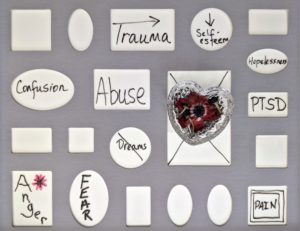What Are Trauma Bonds?
In the book, “How To Do The Work,” Dr. Nicole LePera defines trauma bonding as, “Describes the relationship between two people with insecure attachments (not healthy secure attachments.) This is a problematic bond that is reinforced by neurochemical expressions of reward (love) and punishment (removal of love.)”

This is an interesting way to define relationships. What does love look like to us due to our childhood experiences? In both my personal and professional life, I have seen people fall into this pattern of bonding. People who fall into trauma bonding relationships have been unable to heal from their past experiences. Their subconscious has awareness of their childhood traumatic experiences they endured. This allows for the person’s subconscious to notice that this person they are having a relationship with may have similar traits to the parent/caregiver where the bond began. Which can create these new trauma bonds.
What is the issue with these types of relationships?
These relationships are not authentic love because this type of love can create an addiction in the person because of the craving for attachment. People that fall into these patterns are feeding that craving due to the attachment that was created in childhood. Dr. LePera states, “We crave love, so our child brains learn how to adapt. If our parent-figures gave us attention when we misbehaved (even negative attention) we may have purposefully acted out in order to receive more attention. Our childhood attempts to have our physical, emotional, and spiritual needs met by our parent-figures form the basis of how we meet those same needs in our adult relationships.”
Overall, this is excellent information learning about how we may attach to others in relationships (personal or professional.) Recognizing how our past impacts our current relationships helps us work on providing space for healing our trauma wounds. Being open to letting ourselves heal and begin our trauma work is the first step.




